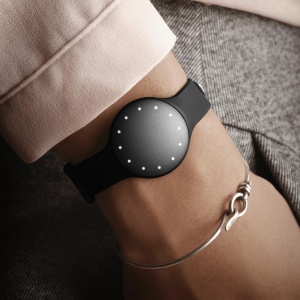Last November, after a month away for client work and visiting family in New Zealand & Australia I decided to buy an activity tracker. When at home in London I can clock 10K of walking easily. When I’m travelling, all activity ceases. So I wanted to try out a so-called “wearable”. I did what ever normal consumer might do and went to John Lewis. After looking around for some time, I eventually found a little locked glass cabinet with the FitBit and the Misfit. A young male staff member tried to sell me a turquoise blue Misfit as “women preferred it”. I rolled my eyes and bought the black one. I’ve now been wearing it on my wrist for over 6 months, probably a record by some standards. Here’s what I’ve learnt.
1. The design is invisible *enough*
I’ve never felt that wearing it was perceived as weird and it mostly stayed hidden under a sleeve. Noone ever asked me about it. That was good. With the incoming British summer, we’ll see if I get more questions. It’s functionality is basically invisible as you have to tap it to get your activity level.
2. End of the day report with no internet
I have basically ignored Misfit most of the day until I reach the end of the day and then double tap it to get the LEDs light up. If I’ve done well I’m happy, if I haven’t, well I might put a bit less food in my plate that night. I almost never use the app because really, seeing how I’ve done every day hasn’t really been useful and I wasn’t interested in entering lots of lots of other data. So in a way this is a better designed pedometer for me and not much more.
3. Placebo
A lot of what people have talked about when talking about wearables is that it influences their daily decision-making. They might walk up the escalator, etc. I think it’s been more subtle for me. I think I’ve been mostly more aware of the activity (mostly walking) that I do and getting a little bit more pleasure out of it, instead of taking it as part of daily life. That’s been fun and has kept me going.
4. Opportunity landscape
In a way, it’s a shame though that the internet piece of this product isn’t as exciting as the product design itself. I don’t think it’s a case that they’ve spent less time on it, but they basically don’t give me a good excuse to give them data. Perhaps the future of some of these devices might be that the internet piece constantly changes or even dies, but that’s ok because the product works on its own, without the internet. It’s far better than something that doesn’t work if the internet bit doesn’t and you end up throwing it away. It’s hard and I’m discovering how hard with the Good Night Lamp. But it’s got to be considered. Would I have accepted to pay £79 if I was buying a pedometer, no. But I did.

